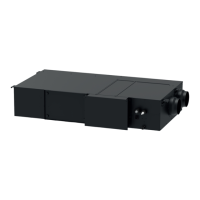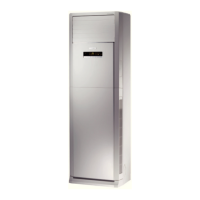ERV+DX coil
27
(9) After-sales installers must be equipped with gloves to protect them from sharp
objects.
3.5.2 Installation Requirement for Air Ducts
This product requires the user to prepare PVC ventilating ducts for outdoor air
suction and indoor air discharge. Our unit adopts constant air volume control to
ensure constant air volume within a certain range of pipe resistance. If the pipe
resistance is beyond the designed value, air supply volume will be insufficient.
Therefore, in order to prevent performance degrading due to improper pipeline
design, please follow the principles recommended below during installation
design.
(1) The total length of air ducts should be based on the features of the using
environment. The resistance of air ducts should not exceed the requirement
for
static pressure. Use non-flammable or in-combustible material.
(2) Set as few bends as possible in the pipeline. For each pipeline, try to limit the
number of bends under 3. Each bend should have a round curve instead of a
right angle of 90°.
(3) The inner surface of the pipeline is smooth, free of dust and wrinkles. The
outdoor air inlet should be set in a place that is convenient for maintenance.
(4) If you want the indoor noise to be as low as possible, you may add a silencer
in
the air ducts. The type of silencer should be selected based on actual
requirements. Please consult professionals to select an applicable silencer. If
the air ducts are equipped with a silencer, the air outlet noise will be lowered
by
4~6 decibels.
(5) When the unit is used in winter, the outside of the pipeline will be frosted after
the dry and cold air enters the ducts; on the other hand, the inside of the
pipeline
will get easily frosted after the wet and warm air of the exhaust outlet
enters the
ducts.
(6) The c
onnecting ducts should be set with an inclination of not less than 0.03.
The
ducts should slant down to the outdoor side so that condensate and
rainwater
will not enter the unit.

